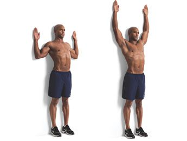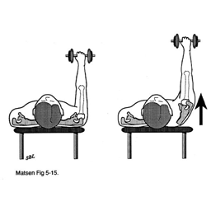Mobility and Injury Prevention (Part 1)
Hey team, the topic for this week is mobility and injury prevention! With our regatta season around the corner, the responsibility to be in our best health and shape falls on every individual. Dragon boat is a team sport, which means we're only as strong as our weakest link, and we want to prevent and minimize injury as much as possible.
Here are some basic guidelines for improving mobility in a dragon boat specific manner. Please take 10 mins before/after your workout to try a few (preferably all) of these exercises. Feel free to message me if you have questions!
Why is mobility important?
Engaging the correct muscle groups required for the movement (and working those correct muscles to properly build strength)
Preventing injury (eg. poor mobility can lead to bad technique and/or overcompensation of accessory muscles → excessive loading → injury)
How can we use this to improve paddling performance?
Injury prevention and improved performance starts with a good warm up!
Two purposes of a dynamic warm-up:
Increase circulation and heart rate
A good warm up should increase your heart rate to the point where you start to break a light sweat
Foam rolling/Lacrosse ball/massage are good methods for tissue release and increasing circulation to that area of the body
Increase proprioception (awareness of body position; foundation for forming mind-muscle connection)
A good warm up should incorporate motion in the required muscle/joint’s full range of motion
This week we will focus on improving mobility around the following 3 regions:
Hip
Hip flexors (mainly your psoas major and iliacus)
Thoracic (T) Spine
Core (abdominals, obliques, erector spinae)
Latissimus dorsi (also important for your shoulder)
Shoulder
Serratus anterior (also important for T spine)
Traps (specifically lower fibres)
Rotator cuff (supraspinatus, infraspinatus, teres minor, subscapularis)
Suggested exercises:
2. Spider lunges
3. T spine extension
4. T spine extension (with foam roller)
5. Wall slide
6. YTWL (lying face down on bench or exercise ball)
7. Serratus anterior exercise
PNF (proprioceptive neuromuscular facilitation) stretching
with partner or band
great way to decrease muscle tension and increase range of motion
Examples: chest/shoulder, hamstrings
Partner pushes to max range of motion and hold for 30s
Contract against force of partner for 10s (partner should resist force → isometric contraction)
Relax and have partner push to further range of motion
Repeat this cycle x3






